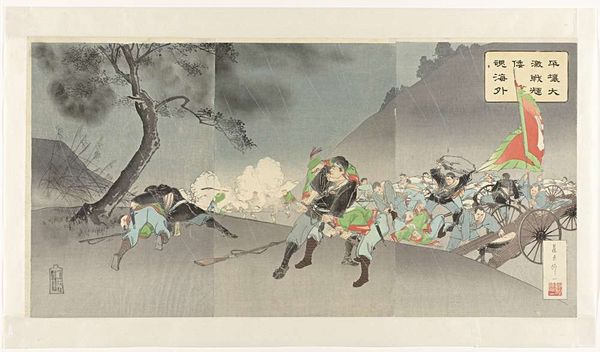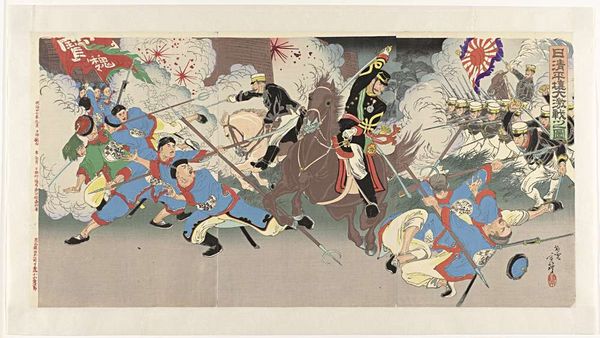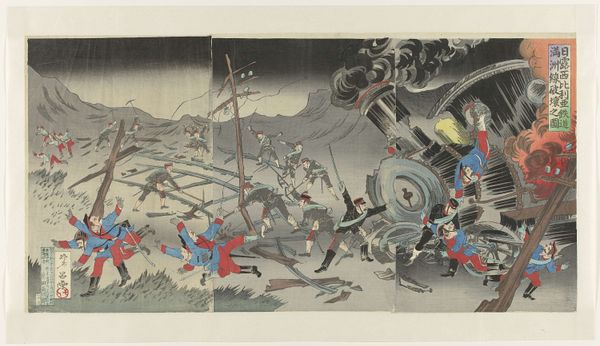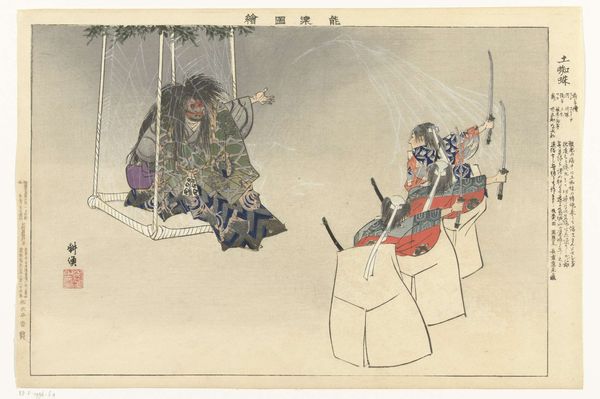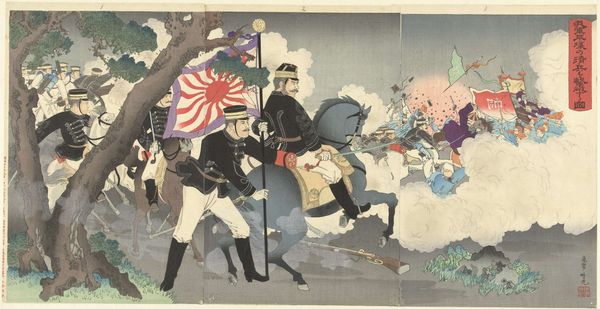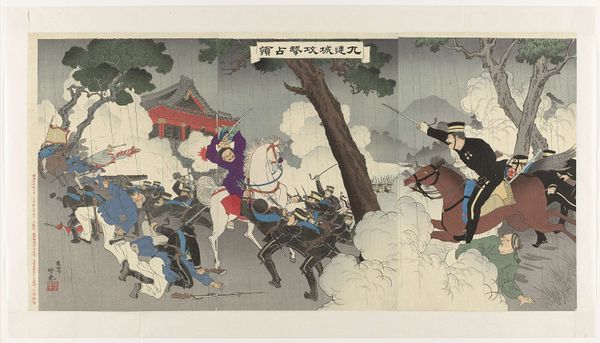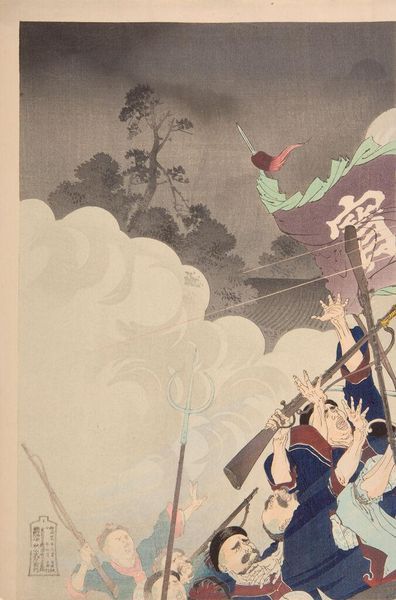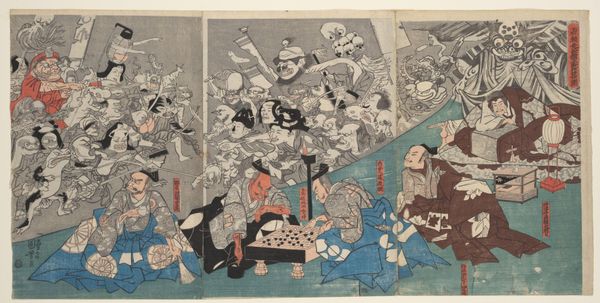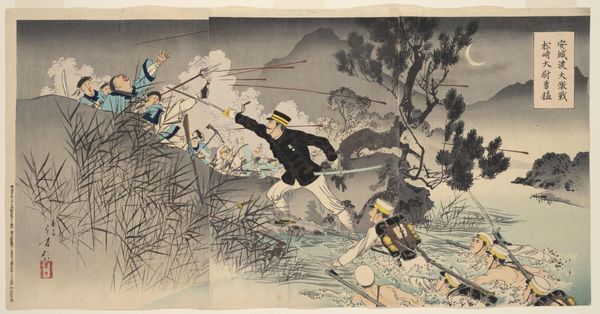
Zware gevechten te Pyongyang tonen de Japanse strijdlust aan het buitenland. 1894
0:00
0:00
Dimensions: height 361 mm, width 708 mm
Copyright: Rijks Museum: Open Domain
Curator: I see mostly shades of grey, which gives it a somber and intense quality. The details seem so far away, as if observed from above through the storm clouds. Editor: You're absolutely right. This triptych woodblock print, titled 'Fierce Fighting at Pyongyang Displays Japan's Military Prowess to Foreign Countries,' by Fujiwara Den'ichi, created around 1894, uses those muted colors so effectively. It's currently part of the Rijksmuseum collection. And while watercolor-like, it is important to remember that color prints during that period depended upon the skills of the woodblock carvers and printers to be successful. Curator: "Military prowess," hmm? It almost feels contradictory, given the grey palette I noticed right away. It looks quite devastating, like they are fighting the elements as much as the enemy. Editor: Exactly. This work emerged during the First Sino-Japanese War. What’s intriguing is how these prints served a dual purpose: documenting events and shaping public opinion back home, in this case, romanticizing military action while acknowledging the grit of war. Curator: I always find that dichotomy in war art fascinating – this need to glorify something inherently destructive. Notice how the eye is drawn to that striking red flag amidst all the muted tones? It is the one aspect of glory the artists wants us to focus on. Editor: And how the composition subtly directs our gaze from left to right, almost choreographing the battle’s progression? There's this undeniable propagandistic element, highlighting order and strategic movement amid the chaos. Also note how it is specifically created to display Japan's growing global position to Western countries at the time. Curator: Yes! It almost transforms this chaotic battle into a well-staged spectacle. Almost desensitizing its viewer to the actual cost of human lives involved. A difficult balancing act to successfully glorify devastation and pain with the beauty and finesse of its rendering, which this artwork certainly accomplishes. Editor: Absolutely. It reflects how art functions not just as a mirror, but also as a tool in constructing collective memory and national identity, with careful considerations about the artwork's potential for export to a European audience. Fujiwara, here, reminds us that behind every heroic narrative lies a far more complicated truth, where it is hard to tell which action leads to prosperity or more problems for each of the players involved. Curator: I’m left pondering the human element lost in the grandeur. I leave with so much more to consider. Thank you! Editor: Likewise. A crucial reminder of how artistic expression intersects with historical narratives, personal emotion and international audiences, always asking us to see the deeper complexities beneath.
Comments
No comments
Be the first to comment and join the conversation on the ultimate creative platform.
